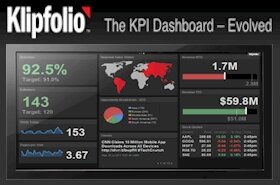Cross-platform challenges are mounting as iOS, Android, RIM, WebOS, and Windows continue to gain traction with enterprises seeking mobile solutions. There’s no end in sight as Apple reports stellar financials and tablet market growth approach 50% per quarter. Historically speaking, 2011 will likely be known as the mobile explosion the year everyone decided that the office is simply not a place where we want to work anymore.
It seems that every company on the planet is either launching new mobile initiatives or wish they were. Something’s gotta give, and it’s probably going to be budgets when the CTO realizes how expensive a cross-platform strategy, based on native OS apps, will actually cost.
The topology of mobile development requirements is pushing many companies to consider alternatives such as HTML5 and web apps instead of native apps. But another alternative exists – native app infrastructures that utilize a virtualization layer. Bitzer Mobile calls this an MVL (mobile virtualization layer).
Bitzer’s approach is straightforward – make it easy for IT organizations to insert a virtual transformation layer to provide an easy-to-create and manage mobile app infrastructure for existing information systems and applications. According to the company’s most recent press release,
Bitzer’s Mobile Virtualization Layer (MVL) connects to existing remote access infrastructure to provide mobile data transport, offline synchronization, native views, graphs and user authentication services to multiple mobile devices. Furthermore MVL enables access to multiple enterprise applications from a single icon on mobile devices. MVLs can be deployed on-premise or in-the-cloud.
This is a pretty good strategy for a couple of reasons. First, IT executives love the idea of leveraging existing resources, databases, and business logic. The Bitzer approach doesn’t obsolete anything that already exists. Second, the virtualizaton layer is very simple and leverages existing IT skills in web services, HTML, and XML with just a little training.
Native applications simply emerge without native coding on all the popular mobile OS platforms with Bitzer’s run-time engine – also known as the Enterprise Virtual App Container (EVC), also described in their January 17 press release.
Bitzer’s patent pending Enterprise Virtual App Container (EVC) is deployed as a native mobile app on mobile devices such as iPhone, iPad, Blackberry, Windows and Android. EVC provides remote access to enterprise applications with a rich experience using the device’s native interface, screen-size, graphics and interaction style.
Bitzer’s EVC (which is simply a native app and interpreter) acts as a homogenous run-time engine for server-based MVLs which contain the app user interface and integration code to the enterprise data. I’ve written about frameworks recently (Runtime Apps – Native App Performance Without the App Store Hassle). Defining what is (and isn’t) in the category of run-time frameworks is debatable. Is RoamBI a BI app or a framework for running BI macros?
Bitzer’s architecture is simply a more programmable environment than say a database system such as FileMaker Pro (the desktop database development environment) and FileMaker Go (the run-time engine for iOS database apps).
Bitzer Enterprise Virtual App Containers (EVC) are freely available for download for development and available today in the iPhone App store, Android Market and BlackBerry App World. Currently, iPad is not supported with it’s own HD version, but the iPhone version works just fine for experimentation. I suspect an iPad version is forthcoming.
Customer branded EVC user licenses with administrator control panel start at $5000 per year for fifty users with discounts for larger user licenses. MVL development is open and free for use by do-it-yourself IT departments, system integrators and independent developers.



















